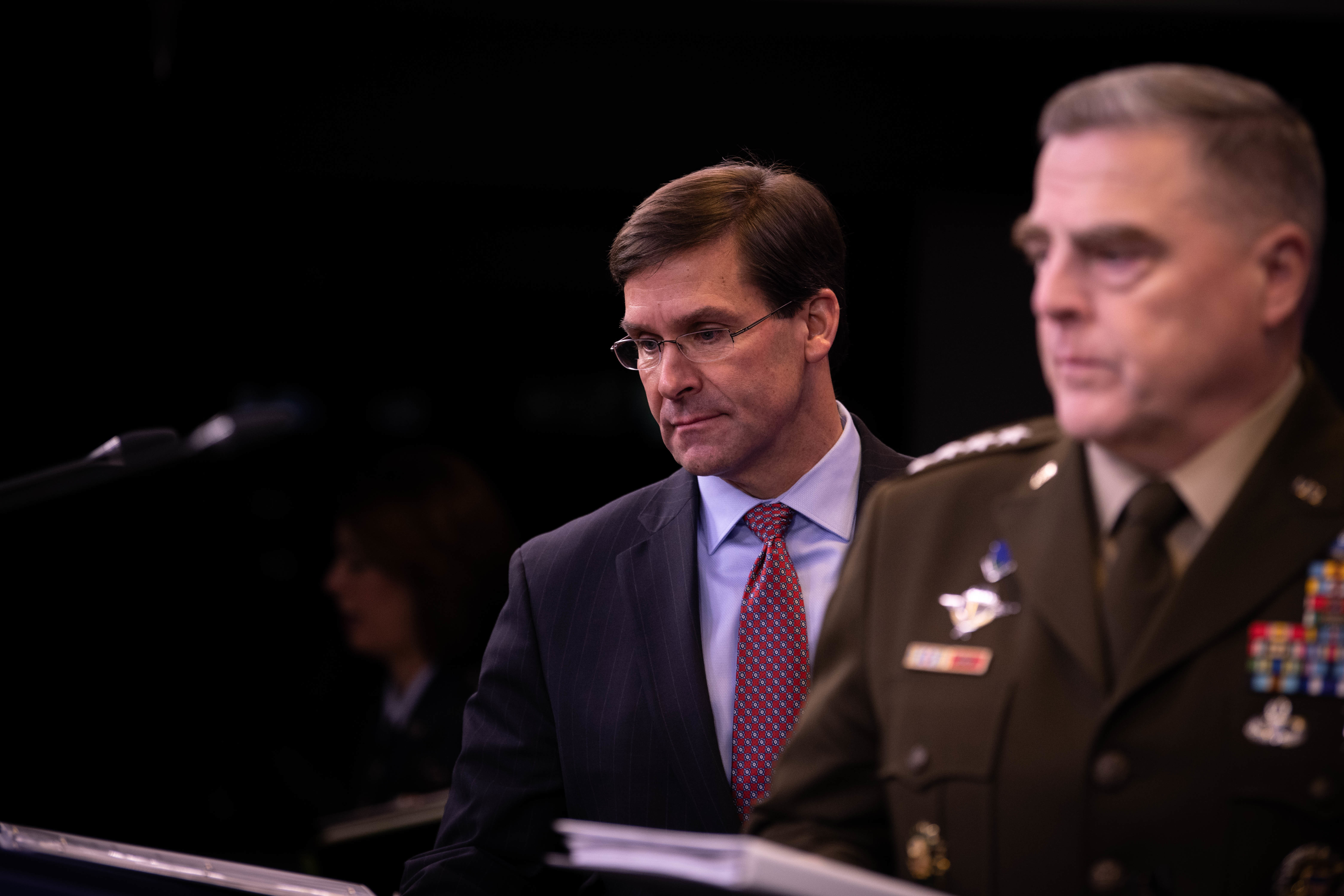By PAUL MCLEARY
PENTAGON: A day after the Iraqi parliament voted to begin the process of kicking US forces out of the country, a leaked draft memo from the US military command in Baghdad set off a scramble in the halls of the Pentagon. Staffers, reporters, the Secretary of Defense and Chairman of the Joint Chiefs all publicly struggled, in real time, and sometimes together, to understand what was happening.
In a remarkable afternoon even by the current chaotic standards, the memo from Brig. Gen. William Seely, commanding general of Task Force Iraq in Baghdad, to the Iraqi military command offered, “we respect your sovereign decision to order our departure.” Given the wishes of the local government, Seely said, Iraqis can expect increased US helicopter traffic around Baghdad as the US begins “repositioning forces over the course of the coming days and weeks to prepare for onward movement.”
The memo began flying around Twitter in the early afternoon, leading some to declare it a fake and others to conclude the US was planning a quick pullout from Iraq even before the Iraqis formally ordered it. Pentagon staffers were just as confused, and printed-out black and white copies pulled from Tweets were soon flying around the E-Ring. Officials in Baghdad soon confirmed it was real.
The firestorm blew up about an hour before Defense Secretary Mark Esper and Chairman of the Joint Chiefs Gen. Mark Milley were due to speak with reporters.
When asked, Esper initially appeared largely unfamiliar with the memo’s contents.
“We are repositioning forces throughout the region…beyond that, with regard to that letter, which I have read once, I can’t tell you the veracity of that letter, I can tell you what I read, that letter is inconsistent with where we are right now,” Esper said.
“There’s been no decision whatsoever to leave Iraq,” Esper added. “There’s no decision to leave, nor did we issue any plans to leave or prepare to leave.”
That seeming break between the Defense Secretary and the military command in Baghdad appeared to call into question how the military was coordinating the fast-moving events in the Middle East as President Trump and the Iranian government Tweet promises of deepening the conflict, and thousands of US troops flow into the region.
After their quick Q&A with reporters, Esper and Milley left, and emails and phone calls were fired off to newsrooms that stories were coming about the disconnect between the Pentagon and Baghdad. Within minutes, word came down that Milley was coming back to the press room, and he was coming quickly.
Standing in the doorway of the press bullpen holding a printout of the letter, Milley said he had just hung up the phone with Central Command’s Gen. Frank McKenzie, who assured him the memo was a draft that was sent by mistake, but McKenzie “used other words that were a little more colorful than mistake,” Milley said.
“That letter — it was a draft, it was a mistake, it was unsigned, it should not have been released,” Milley said. “And the first part of it, which says ‘repositioning forces over the course of the coming days to prepare for onward movement’” was “poorly worded, implies withdrawal. That is not what’s happening.”
Eager to show there’s no daylight between the White House — where President Trump on Monday refused to pull US troops from Iraq until Baghdad paid Washington for an air base Americans built after the 2003 invasion — the Pentagon, and officers in Baghdad, Milley stressed that “we understand U.S. government policy — nobody is leaving, there’s no onward movement, we got all that. Honest mistake. Draft.”
For today, at least, the 16-year US military presence in Iraq won’t end with a leaked memo. But the existence of the memo, which clearly states that the US military is making plans to move troops around the country in preparation for a withdrawal, shows that the writing is not only on the wall, it’s on paper.

No comments:
Post a Comment